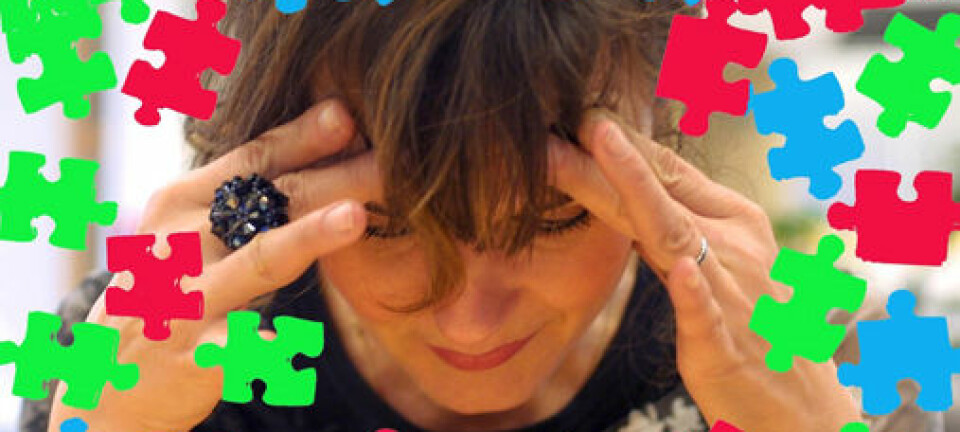
Scientists find possible cause for Alzheimer's
New results suggest a potential cause of Alzheimer’s, which could one day lead to early detection and treatment of this debilitating disease.
The brain is constantly producing waste products. This ‘waste’ builds up, like a pile of dirty dishes by the kitchen sink. The only way to get rid of those dishes, is to get a good nights sleep.
When we sleep, the brain gets to works in rinsing out these waste products, making our brain clean and fresh when we wake up the next day. The process that was first discovered in 2013 but new research suggests that this clean-up process is reduced in Alzheimer’s patients, and that this could be happening well before they display any symptoms of the disease.
“We’ve discovered for the first time that the brain’s cleaning system doesn’t work very well in mice, even before they become sick,” says co-author Maiken Nedergaard, from the Center of Basic and Translational Neuroscience, University of Copenhagen, Denmark.
“It could possibly be the reason why they become sick in the first place. We imagine that if we can develop drugs to make this system more effective, then it could lead to fantastic developments in treatment,” says Nedergaard.
The new study in published in the journal Neurobiology of Disease.
A new paradigm in Alzheimer’s research
The new results have been praised by other scientists.
“It's a new paradigm, if these mechanisms also influence the development of Alzheimer’s in people, and we could then come up with new treatments,” says Niels Heegaard, a apecialist in autoimmunology and biomarkers from Statens Serum Institute, Denmark. There are currently no cures for Alzheimer’s or other forms of dementia.
“I think it’s very exciting. Maiken has etched out a new path that widens both our understanding and the options for future Alzheimer’s research,” says Heegaard, and adds that the new results have big implications for improved diagnosis of the disease.
“Perhaps one day it will help us to identify patients earlier. Today, it’s a problem that we [can’t identify]who it is that will develop Alzheimer’s, or some other [type of dementia],” he says.
But do the results apply to humans?
Nedergaard and her team are now investigating to see whether the mice results are also applicable to humans.
In a separate study, published in the Journal of Cerebral Blood Flow and Metabolism, Nedergaard collaborated with colleagues from Oulu University Hospital, Finland to develop a new method to film the cleaning processes in action for the first time in a human brain.
The method can be used to measure the different signals of movement of liquids within the brain--blood pressure, heart beat, and breathing. These responses are often so subtle that they are exceptionally difficult to detect and measure. So the new method requires very detailed
MR-scanning to achieve this, says Heegaard.
“The interesting thing here is that the method is developed in healthy control subjects, and it’s the first time that we can see currents like this in the brain,” says Heegaard.
“It’s new that we can measure the pulses and investigate the key physiological mechanisms that drive liquid-currents,” he says.
“The pulses in fluid look to have an influence on the flow, and now we have a method where we can measure them with sufficient detail. We can now find out if the relationship that Maiken’s group have found in mice also applies to humans.”
Ground breaking research expected to lead to new treatments
Heegaard stresses that the results need to replicated first in other mouse-models, but nonetheless, he expects that one day, new treatments will arise from this line of research.
“If we can show a relationship between people who develop Alzheimer’s and a specific type of pulse in the brain, it gives a new point of attack to develop medicine. In theory, we can develop new medicine that targets the brains transport molecules,” says Heegaard.
Nedergaard is also excited about the Finnish research.
“It’s the most ground breaking method to come out in years,” says Nedergaard.
“You can only go so far in mice, but this research has the potential to lead to fantastic developments in treatments and can perhaps lead to diagnostic tools for detecting Alzheimer’s in people before it develops,” she says.
----------------------
Read the Danish version of this story on Videnskab.dk
Translated by: Catherine Jex
Scientific links
- Suppression of glymphatic fluid transport in a mouse model of Alzheimer's disease (2016), Neurobiology of Disease, doi:10.1016/j.nbd.2016.05.015
- Ultra-fast magnetic resonance encephalography of physiological brain activity - Glymphatic pulsation mechanisms? (2016), Journal of Cerebral Blood Flow & Metabolism, doi: 10.1177/0271678X15622047









